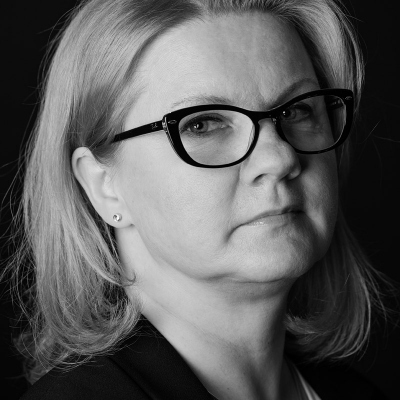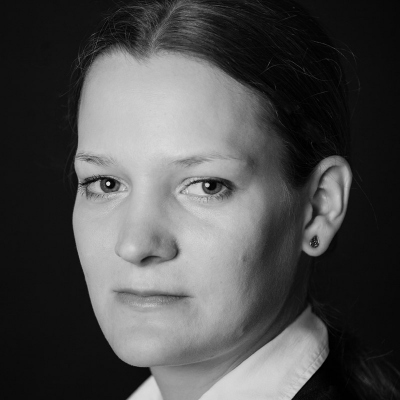Abolition of the graphical presentation requirement for national trademarks
One of the changes in the amendment of the Industrial Property Law is that there will no longer be a graphical presentation requirement for trademarks. From 16 March 2019, it is possible for trademarks to be presented in any form using generally available technology, provided that they are presented in a clear, precise, independent, understandable, durable, objective, and easily accessible manner.
The definition of a trademark used in the past has been changed, and now the graphical presentation requirement no longer applies. Under the amended wording of Art. 120 of the Industrial Property Law, a trademark is now any mark whereby the products of a business can be distinguished from those of another business, provided that it can be presented in a trademark register in a manner definitively and precisely identifying the protected item.
In particular, a trademark can be a form of expression (including a person’s name), drawing, letter, digit, colour, or shape (including the shape of a product or packaging), and also a sound.
The graphical presentation requirement that existed in the past did not cause major problems in filings for registration of conventional trademarks such as word, figurative, or shape marks. For those who wished to make their products or services distinguishable using a characteristic tune, hologram, or moving image, on the other hand, the graphical presentation requirement could be problematic.
The graphical presentation requirement has been abolished due to implementation into Polish law of Directive 2015/2436. Abolition of this requirement now means that certain types of trademarks can be presented more easily and more precisely. It also means that new types of trademark can be applied for in formats not previously recognised in the Polish legal system.
A change of this nature was in fact made with respect to EU trademarks some time ago, on 1 October 2017. Examples taken from the practice of the European Union Intellectual Property Office (EUIPO) suggest what practical importance these changes in Polish law will have.
You don’t have to read it to hear it: sound marks
In the past, there were numerous attempts to solve the problem of graphical presentation of trademarks that took the form of a tune or sound, onomatopoeia, sounds of nature, a call, or a jingle. The universally established practice was to register marks of this kind as sheet music, information presenting the amplitude of vibrations, a colour record of the spectrum of a sound, or a spectrograph record, as shown below:
EUTM-001480805

EUTM-005170113

But this was not a clear and easily accessible form of presentation of a trademark. Not everyone can read musical notation, and not every sound can be written down on a musical score.
Under the amendment, a sound mark consisting solely of a sound or a combination of sounds must be presented by submitting either an audio file (MP3 up to 5 MB) which can be played, or sheet music (on paper or as a JPEG file) containing all of the elements essential for interpretation of the tune (for example key, tempo, lyrics). The view of the Polish Patent Office is that one form has to be selected to present the mark, and therefore it is not possible to submit both an audio file and sheet music at the same time.
EUTM-017700361

(see https://euipo.europa.eu/eSearch/#details/trademarks/017700361)
A moving target: motion marks
Motion marks comprise specific movements or a constantly changing layout of elements. Marks of this kind include animated marks, gestures, and frequently holograms (although under some classification systems these are a separate kind of mark). Before the graphical presentation requirement was abolished, these marks were often presented frame by frame, with a description of how the items moved.
EUTM-005338629

Under the amendment, a motion mark must be presented in the form of a video file (MP4 of up to 50 MB) or a series of consecutive still images showing movement or change in layout (JPEG). If still images are used, they can be numbered, or listed in the order of appearance.
EUTM-017912571

(see https://euipo.europa.eu/eSearch/#details/trademarks/017912571)
A world of possibilities: multimedia marks
Multimedia marks are a novelty among unconventional trademarks. The first time it became possible to apply to register trademarks of this kind was at the EUIPO on 1 October 2017, when a new definition of a mark was formulated. A multimedia mark is a combination of image and sound, or becomes a combination of image and sound. Essentially, a multimedia mark and a motion mark differ in only one aspect, which in fact is significant, namely that in a multimedia mark the moving image is accompanied by sound. A mark of this kind must be submitted to the Polish Patent Office in an audiovisual file containing a combination of images and sounds. This means that only an MP4 file (maximum 50 MB) can be enclosed with the application.
EUTM-017451816

(see https://euipo.europa.eu/eSearch/#details/trademarks/017451816)
Fashionable patterns
The new categories of marks include patterns on material. A mark in the form of a pattern consists solely of a set of elements that repeat regularly. It must be presented to the Polish Patent Office as a reproduction or JPEG file. With respect to this category of marks, the application must contain a description stating how the elements are regularly repeated and the colours used.
EUTM-017421827

Back to the future: holograms
In the past, filings to register hologram marks were centred around traditional holograms of the type known from perfume packaging or CDs.
EUTM-001787456

Although the notion of hologram marks is nothing new, they did not become a separate category of trademark until the definition of a trademark was changed.
Under the amendment, a mark of this kind can be presented as a video file (MP4 up to 50 MB), or in graphical or photographic form adequately capturing the overall holographic effect.
EUTM-017579491

(see https://euipo.europa.eu/eSearch/#details/trademarks/017579491)
Technical aspects of filing for registration of a mark under the new rules
The amendment does not affect the word mark application process. Other types of trademarks (figurative, figurative with word elements, shape, position, pattern, colour, colour combination) can be presented in graphical form (pasted into the filing) or enclosed as a JPEG file. Unconventional marks can be presented in graphical form (for example sheet music in the case of a sound mark, or a series of images in the case of a motion mark). In most cases, however, electronic files (JPEG, MP3, MP4) will probably be used. A description of the trademark can be enclosed with any kind of trademark. It is particularly advisable to include a description in cases of a position mark which is a design on material or colour, a motion mark, and other marks. The descriptions of these trademarks are listed in the Polish Patent Office’s online database (Trademark Register Plus dla Znaków Towarowych).
The amendment paves the way for registration of any trademark that can be presented in appropriate form using generally available technology. It could also in the future enable registration of marks that today cannot be registered due to technological constraints, such as scents and flavours. It will be possible to register any type of trademark, including those not yet known today, if technological advances allow them to be reproduced in the register in a clear, precise, separate, easily available, understandable, durable, and objective manner, so that the competent authorities and the public are able to determine clearly and precisely the item registered by the trademark owner.
The amendment applies to trademarks applied for with the Polish Patent Office from 16 March 2019, and also marks applied for before that date if the registration proceedings were not concluded prior to that date.
Summary
The Polish Patent Office’s website provides information in digestible form regarding the new definition of a trademark and the ways trademarks are to be presented, especially unconventional trademarks, in the publication “Collective statement on ways in which new types of trademark are to be presented” and in a guide for people filing for new types of trademarks. These materials discuss how the EUIPO and the Polish Patent Office approach this issue. The Polish Patent Office also tries to accommodate proprietors who are unable to determine by themselves the type of mark being applied for. If the type of mark is not stated in the filing, the Polish Patent Office will ascertain the type of mark according to how it is represented and notify the applicant. An applicant that does not classify its mark correctly will be notified of the Polish Patent Office’s assessment and given a specified time to state its position on the assessment.
Due to advances in technology, the graphical presentation requirement for every trademark began to hamper businesses’ potential. Easing the regulations and abolishing this requirement will make it easier to register the marks they actually use when trading. It may also play a role in increasing the number of unconventional trademarks registered. The changes to the Industrial Property Law mean a huge range of possibilities for businesses operating above all in the gaming, phonographic or film industries, or for example in marketing.
Marzena Białasik-Kendzior, Monika Dynowska, Intellectual Property practice, Wardyński & Partners

